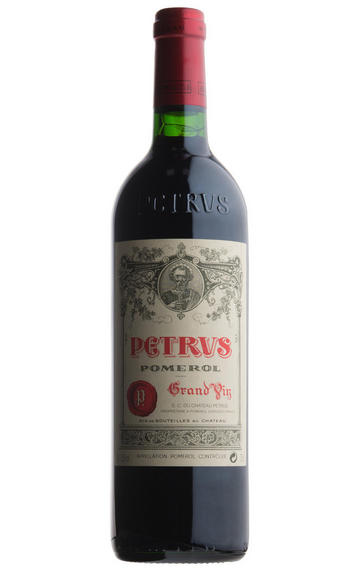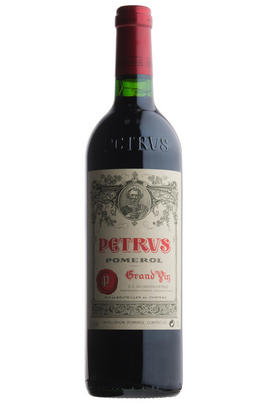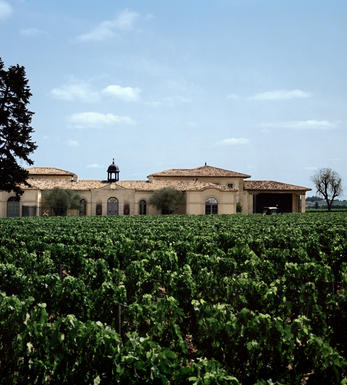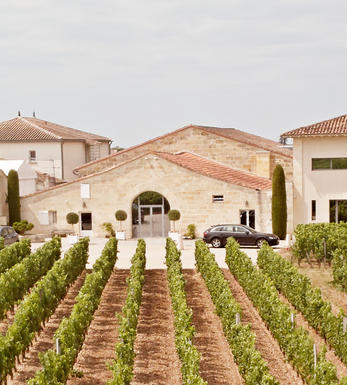
2022 Petrus, Pomerol, Bordeaux

Critics reviews
Jane Anson, janeanson.com (May 2023)
Jancis Robinson MW, jancisrobinson.com (May 2023)
The 2022 Pétrus has turned out brilliantly, bursting with aromas of mulberries, cherries, raspberries and violets, followed by a full-bodied, rich and fleshy palate that's ample and enveloping, its succulent core of fruit entirely concealing its sweet structuring tannins. Concluding with a long, resonant finish, its purity of fruit and structural suavity are deceptively effortless, but in reality result from incredible attention to detail in a vintage like this. Olivier Berrouet felt that maturity hadn't yet been attained by late August, picking a little later, with the core of the vineyard harvested on September sixth and seventh. Low yields and elevated concentration led him to reduce pumping over but prolong vatting, letting the wine take its time to come together. While I don't think it will quite rival the brilliant 2020 (time will tell!), it is a superb achievement and remarkably harmonious for such an extreme vintage.
William Kelley, Wine Advocate (April 2023)
About this WINE

Petrus
Petrus is a wine estate in Pomerol on the Right Bank of Bordeaux. It is among the most celebrated and recognisable wines in the world.
While the estate can trace its history to at least 1837, it flew relatively under the radar until around the 20th century. Madame Loubat, who became the sole owner in 1945, felt that the estate was truly special, and her efforts were instrumental in establishing Petrus on the world stage. She also appointed Jean-Pierre Moueix as the exclusive agent; he and his sons Jean-François and Christian were key in building the estate’s modern reputation. The Moueix family became majority owners here in 1969. In 2018, they were joined by American-Colombian Alejandro Santo Domingo, who purchased a 20% stake.
Petrus is located atop the Pomerol plateau. Most of its vines sit on a so-called “buttonhole” of blue clay soil, known as smectite. This soil’s ability to retain water is a huge benefit in the Pomerol appellation, where drought is a known issue. The vineyard is planted mostly to Merlot.
The estate is run today by winemaker Olivier Berrouet, previously of neighbouring Château Cheval Blanc. Olivier joined in 2008, taking over from his father, Jean-Claude, who had produced 44 vintages of Petrus in his time.

Pomerol
Pomerol is the smallest of Bordeaux's major appellations, with about 150 producers and approximately 740 hectares of vineyards. It is home to many bijou domaines, many of which produce little more than 1,000 cases per annum.
Both the topography and architecture of the region is unremarkable, but the style of the wines is most individual. The finest vineyards are planted on a seam of rich clay which extends across the gently-elevated plateau of Pomerol, which runs from the north-eastern boundary of St Emilion. On the sides of the plateau, the soil becomes sandier and the wines lighter.
There is one satellite region to the immediate north, Lalande-de-Pomerol whose wines are stylistically very similar, if sometimes lacking the finesse of its neighbour. There has never been a classification of Pomerol wines.
Recommended Châteaux : Ch. Pétrus, Vieux Ch. Certan, Le Pin, Ch. L’Eglise-Clinet, Ch. La Conseillante, Ch. L’Evangile, Ch. Lafleur, Trotanoy, Ch. Nenin, Ch. Beauregard, Ch. Feytit-Clinet, Le Gay.

Merlot
The most widely planted grape in Bordeaux and a grape that has been on a relentless expansion drive throughout the world in the last decade. Merlot is adaptable to most soils and is relatively simple to cultivate. It is a vigorous naturally high yielding grape that requires savage pruning - over-cropped Merlot-based wines are dilute and bland. It is also vital to pick at optimum ripeness as Merlot can quickly lose its varietal characteristics if harvested overripe.
In St.Emilion and Pomerol it withstands the moist clay rich soils far better than Cabernet grapes, and at it best produces opulently rich, plummy clarets with succulent fruitcake-like nuances. Le Pin, Pétrus and Clinet are examples of hedonistically rich Merlot wines at their very best. It also plays a key supporting role in filling out the middle palate of the Cabernet-dominated wines of the Médoc and Graves.
Merlot is now grown in virtually all wine growing countries and is particularly successful in California, Chile and Northern Italy.


Buying options
Add to wishlist
Description
Plush ruby red in colour, this is a seductive but serious and skilfully constructed Petrus with layers of dense black choclate, seductive texture, and luxurious density to the black fruits. The skill of the winemaking, and the brilliance of the terroir comes through in the sense of contrast and relief, with a chalky edge to the tannins that manages to both hug your mouth while giving breathing room. Intense spice on the finish, waves of coffee and cocoa bean, graphite, rose petals, black liqourice, mint leaf, serous structure , this is a Petrus for the ages. 6% press wine, 50% new oak. Harvest September 1 to 6. Potential upscore in bottle.
Jane Anson, janeanson.com (May 2023)
wine at a glance
Delivery and quality guarantee